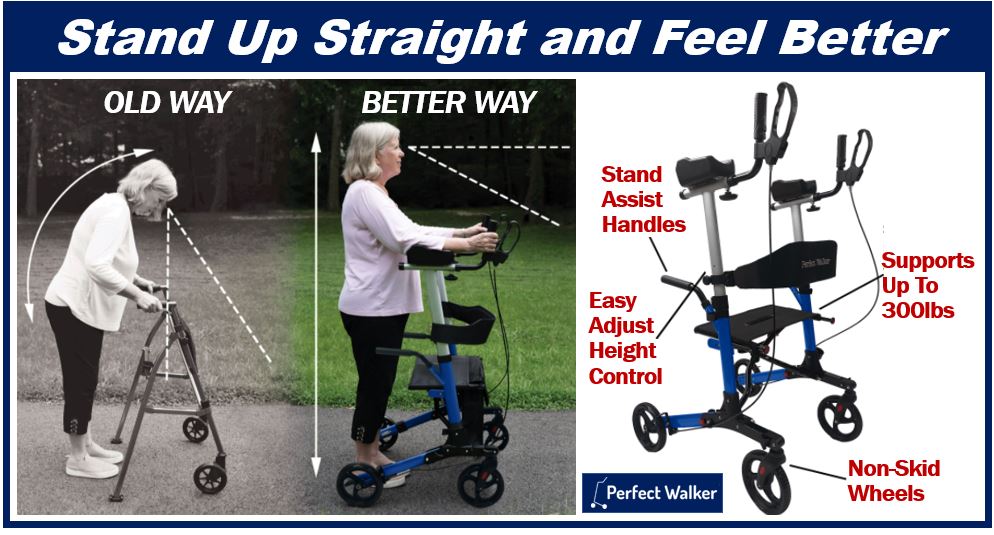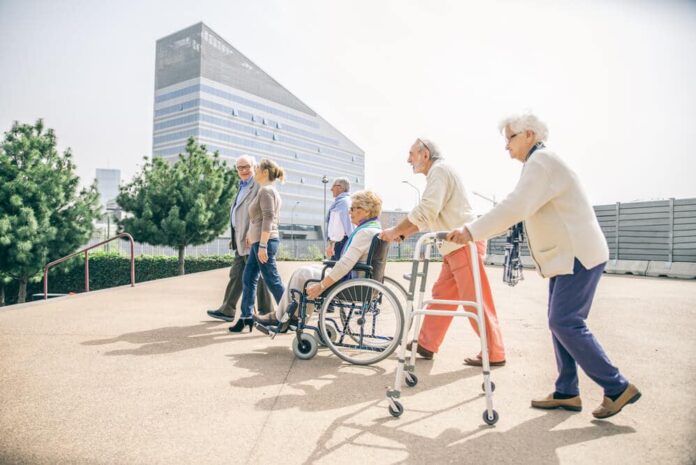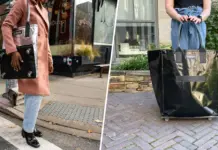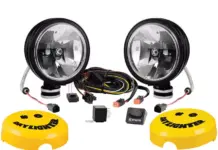Mobility technology is empowering an active-aging society to reclaim their independence and navigate aging-in-place life ache-free. Here are the top seven technologies paving the way for mobility-restricted senior citizens in 2021.
State-of-the-art upright walkers
Traditional walkers and rollators certainly deserve credit for the independence they grant to seniors, but they also require hunching over and encourage poor posture. This is why upright walkers like The Perfect Walker are becoming more and more prevalent.

Upright alternatives are the most popular mobility-assistive tools and compared to traditional walkers, their benefits include:
- Reducing back pains due to an ergonomic design that make users stand straight
- Typically including a pull-down seat to rest anywhere conveniently
- Greater autonomy to prolong outdoor activities
- Greater control through anti-slip handgrips and sturdy wheels.
Mobility scooters
A notable addition to the new mobility wave, mobility scooters are electric vehicles that primarily serve to assist mobility-restricted individuals. Unlike power wheelchairs, mobility scooters are generally more affordable, convenient to handle, and customizable. These mobility aids typically carry the extra convenience of a portable basket and footrest.
iBot wheelchair
The iBot motorized wheelchair is an advanced electric vehicle that can climb stairs, elevate the user to a certain height while scaling a staircase, and transport them at a regular walking speed. It also features self-balancing technology to help climb stairs without anyone having to carry the user.
Stairlift
As one of the most affordable assistive devices, installing a stairlift is ideal for those seniors who’ve elected to age in place. Mobility-restricted users can enjoy the comfort and safety of climbing the staircase by sitting on the device and controlling a lever. Stairlifts are an excellent option for making the home safer for the elderly whenever living on the ground floor is not an option.
Sock aid kits
Preparing to stand and move is just as critical as moving itself, and finding comfortable footwear can be especially important. Sock aid kits help senior adults dress by eliminating the need to bend over when putting on socks. They include a foot chute that allows the user to slide on socks without caregiver assistance easily. Some are even designed to complement larger feet or arthritis conditions.
Power-lift recliners
If snuggling up in a well-loved recliner poses a challenge for your elderly loved one, these high-tech alternatives may be the solution. For those unfamiliar with the technology, a power-lift recliner tilts the person forward to lift them, eliminating the need for unnecessary scooting or core muscle strain. As a bonus, power-lift recliners can also lean back and have wheels to allow ease of transfer. If a hassle-free seating arrangement piques your interest, scan the market for models with features such as multi-level adjustments for comfortable positioning, built-in back-massage technology, and heat therapy.
Anti-slip products
Due to aching joints and deteriorating ranges of motion, senior citizens often face difficulties when climbing stairs. Fortunately, anti-slip products can make seniors’ lives a bit easier and alleviate anxieties about life-threatening spills. These safety-first devices can be applied on the flooring of staircases to prevent slipping. Examples are rubber floor treads for both outdoor and indoor and anti-slip rolls for non-carpeted areas.
Analysis
This article gives a simple overview of some of the mobility aids that are currently being used by older adults. The list includes products that help with pedestrian traffic outside the home as well as products that help older adults get around inside their homes safely, like stairlifts and power-lift recliners. This article is primarily a marker for me to know what the technology is like for the kinds of mobility aids that are currently on the market. All of these products happen to focus on the individual mobility of an older adult, and provide solutions for older adults who don’t want to have to rely on other people to get around their homes or walkable distances outside. However, I think there could be an opportunity to pull from the technology used in these personal mobility aids in the design of a mobility aid that suits multiple people instead.




